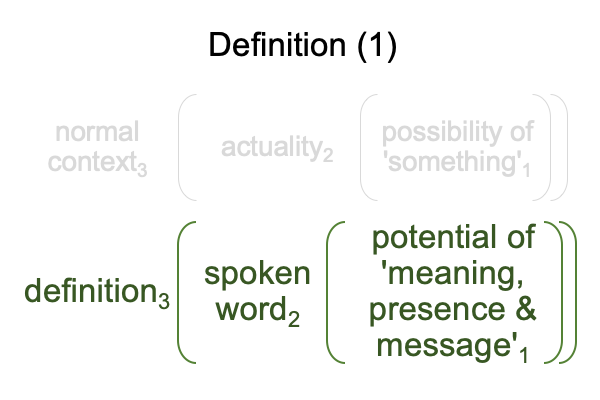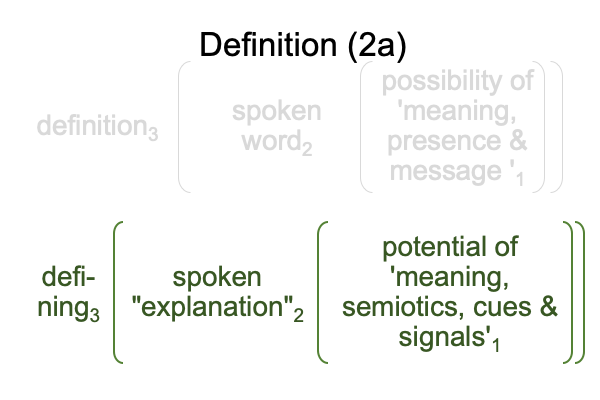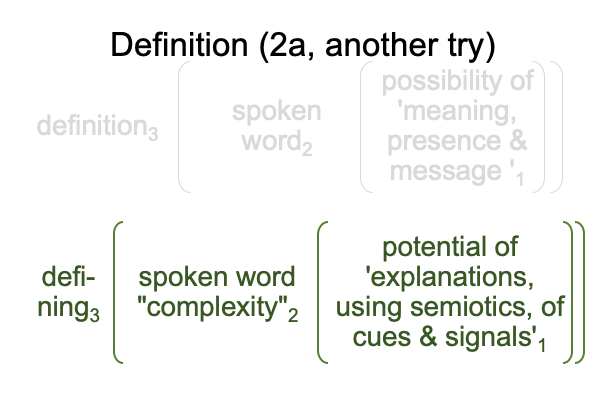0672 In section 14.4, the authors announce that they intend to use semiotics to explain cues and signals in bacteria.
On one hand, this is a fool’s errand, since cues and signals are specifying sign-vehicles (SVs) in the Sharov and Tonnessen noumenal overlay for semiotic agency. They are real initiating (semiotic) events.
On the other hand, the very fact that the authors see a need to explain cues and signals in bacteria suggests that biosemiotics encompasses more than semiotic agency. But what is that “something more”?
0673 Section 14.4.1 is titled, “Types of Semiosis, Signs and Effectors”. The authors enter into a curious discussion concerning the appearance of greater and greater complexity on Earth. Does semiotics play a role? Does a change in semiosis accompany each major transition in evolutionary history, such as the transition from prokaryotic to eukaryotic life?
This debate winds its way into a ranking of semiosis into proto- or primitive semiosis and eu- or more advanced semiosis. “Protosemiosis” applies to prokaryotes and “eusemiosis” to eukaryotes.
0674 With that in said, there arises a question of definition.
In the Lebenswelt that we evolved in, language evolves in the milieu of hand talk.
The spoken word, “definition”, does not appear in the lexicon of any hand-talk language.
What is there to picture or point to?
So, where does the potential of meaning, presence and message come from?
Hand-talk words picture and point to their referents. Meaning, presence and message are built into the natural-sign qualities of icons and indexes. Icons and indexes promote implicit abstraction.
Speech-alone words cannot picture or point to their referents. So, they must be defined. That is where the nested form for definition turns out to be handy, as noted in Razie Mah’s e-book How To Define The Word “Religion” (available at smashwords and other e-book venues).

Speech-alone words label anything. Purely symbolic labels permit explicit abstraction.
0675 Now, putting the evolution of complexity and the histories of particular labels aside, I return to the title of section 14.4., “Using Semiotics to Explain Cues and Signals in Bacteria”. How do these keywords figure into the category-based nested form for definition?
Here is my guess, concentrating on the word, “explanation”.

0676 The author’s normal context of definition3 brings the actuality of a spoken explanation2 into relation with the possibility of ‘the meaning and semiotics (presence) of bacterial cues and signals (message)’1.
0677 Maybe I am too cautious in my associations. The authors’ discussion seems to imply that the spoken word2should be “complexity” and the meaning should be “explanation”.
0678 If that is the case, then I may associate the author’s potential1 in definition3 to the bacteria’s potential1 of defining3 its own semiotic agency2 within its Umwelt3.
Explanation associates to meaning and to a bacterium maintaining its identity (SOe).
Semiotics associates to presence and to competitive competition maintaining one or another “temporal phenotype” (SOs[and] SVe).
Cues and signals associates to message and to what a bacterium encounters in its Umwelt (SVs). At this juncture, a word coined by Jakob von Uexkull floats into view. The Umwelt consists of all the sign-vehicles (SVs) that an organism can specify (SIs).
0679 What does this imply?
Well, let me display my more daring guess.

I ask, “Is the author’s focus on ‘complexity’, rather than ‘explanation’? Does ‘complexity2‘ emerge from (and situate) the potential of explanations (meaning), using semiotics (presence), of cues and signals (message)1 in the normal context of definition3? And, is it any coincidence that this label2 might apply to the S&T noumenal overlay?”
Does an increase in “complexity” entail an increase in “semiotic agency”?
